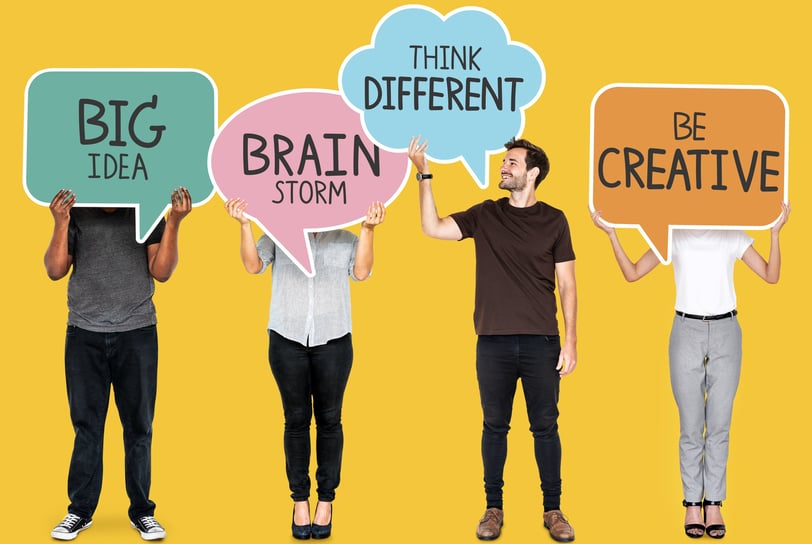Emerging Trends in Creative Design: What to Watch in 2024
Explore the dynamic world of creative design with our latest blog post on key industry trends. Discover how AI-driven tools, sustainability, AR/VR, minimalism, personalization, and the fusion of digital and physical spaces are transforming design. Whether you're an experienced designer or just starting out, this guide offers valuable insights to keep you ahead of the curve and inspire innovative work.
1/1/20243 min read


The creative industry is ever-evolving, driven by advancements in technology, cultural shifts, and changing consumer preferences. As we navigate through 2024, several key trends are emerging that promise to shape the future of design. In this blog, we will delve into these trends, exploring how they are transforming the creative landscape and offering insights into how designers can stay ahead of the curve.
1. The Rise of AI-Driven Design
Artificial Intelligence (AI) has made significant strides in recent years, and its impact on creative design is profound. AI-powered tools are now capable of generating designs, optimizing workflows, and providing data-driven insights that were previously unimaginable. Tools like Adobe Sensei and Figma’s AI features are revolutionizing how designers work, enabling them to create more efficiently and with greater precision.
AI is not only streamlining the design process but also enhancing creativity by offering new perspectives and solutions. Designers can use AI to automate repetitive tasks, freeing up time to focus on the more nuanced aspects of their work. Moreover, AI can analyze vast amounts of data to identify trends and preferences, allowing designers to tailor their creations to meet specific audience needs.
2. Sustainable and Eco-Friendly Design
Sustainability is no longer a niche concern; it has become a central aspect of design across industries. Consumers are increasingly aware of the environmental impact of their choices, driving demand for eco-friendly products and practices. Sustainable design principles, such as using recyclable materials, reducing waste, and considering the lifecycle of a product, are gaining prominence.
Designers are now tasked with creating products and solutions that not only meet aesthetic and functional requirements but also adhere to sustainability standards. This shift towards eco-friendly design is influencing everything from packaging and product design to architecture and urban planning. The integration of green technologies and sustainable materials is essential in addressing environmental challenges and meeting consumer expectations.
3. Immersive Experiences with AR and VR
Augmented Reality (AR) and Virtual Reality (VR) are transforming the way we experience and interact with design. These technologies are no longer confined to the realms of gaming and entertainment; they are being integrated into various aspects of design, from retail and marketing to education and healthcare.
AR and VR offer immersive experiences that engage users in new and exciting ways. In retail, AR allows customers to virtually try on clothes or visualize how furniture will look in their homes. In education, VR provides interactive learning environments that enhance comprehension and retention. These technologies are also enabling designers to create more interactive and engaging marketing campaigns, providing a deeper connection between brands and consumers.
4. Minimalism and Functionality
The trend towards minimalism continues to gain traction, driven by the desire for simplicity and functionality in design. Minimalist design focuses on essential elements, removing unnecessary clutter to create clean, straightforward, and functional aesthetics. This approach is evident in various domains, including web design, product design, and interior design.
Minimalism emphasizes quality over quantity, with a focus on using high-quality materials and craftsmanship. It also prioritizes functionality, ensuring that every element serves a purpose. This trend resonates with consumers who seek simplicity and efficiency in their lives, and it aligns with the broader movement towards mindfulness and intentional living.
5. Personalization and Customization
In an age of mass production, personalization and customization are becoming increasingly important. Consumers are looking for unique, tailor-made products that reflect their individual tastes and preferences. This trend is driving a shift towards more personalized design solutions, from custom-tailored clothing and bespoke furniture to personalized digital experiences.
Advancements in technology are facilitating this trend, making it easier to create customized products and experiences at scale. 3D printing, for example, allows for the production of custom designs quickly and cost-effectively. In the digital realm, AI and machine learning are enabling the creation of personalized content and experiences based on user data and behavior.
6. The Fusion of Digital and Physical Spaces
The boundaries between digital and physical spaces are increasingly blurred, resulting in a seamless integration of online and offline experiences. This trend is particularly evident in retail, where brick-and-mortar stores are incorporating digital elements to enhance the shopping experience. Digital displays, interactive kiosks, and mobile integration are becoming commonplace, creating a cohesive and engaging customer journey.
This fusion of digital and physical spaces extends beyond retail, influencing areas such as interior design, event planning, and public spaces. The goal is to create environments that are not only aesthetically pleasing but also interactive and responsive to users' needs. This trend is driving innovation in design, pushing the boundaries of what is possible and redefining the user experience.
As we move through 2024, the creative design industry is poised for exciting transformations. AI-driven design, sustainable practices, immersive technologies, minimalism, personalization, and the fusion of digital and physical spaces are all shaping the future of design. Staying informed about these trends and understanding their implications is crucial for designers seeking to innovate and create meaningful, impactful work. By embracing these emerging trends, designers can not only meet the evolving demands of consumers but also contribute to a more sustainable and technologically advanced future.
subscribe to our newsletter
Office
Industry House,10, Camac St,
Elgin, Kolkata, 700017
Phone
+91 9777680031
info@digitalnari.com
Socials
Copyright 2024 Digital Nari . All Rights Reserved . All Quirks Embraced.
careers@digitalnari.com
